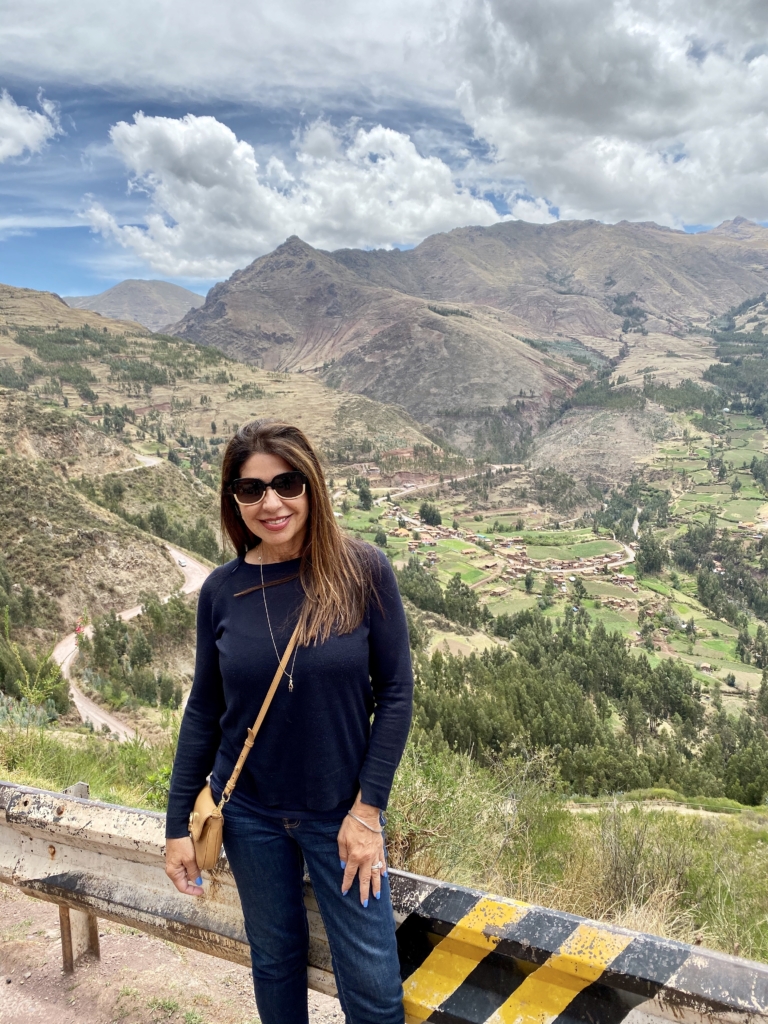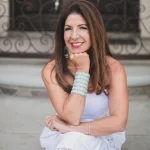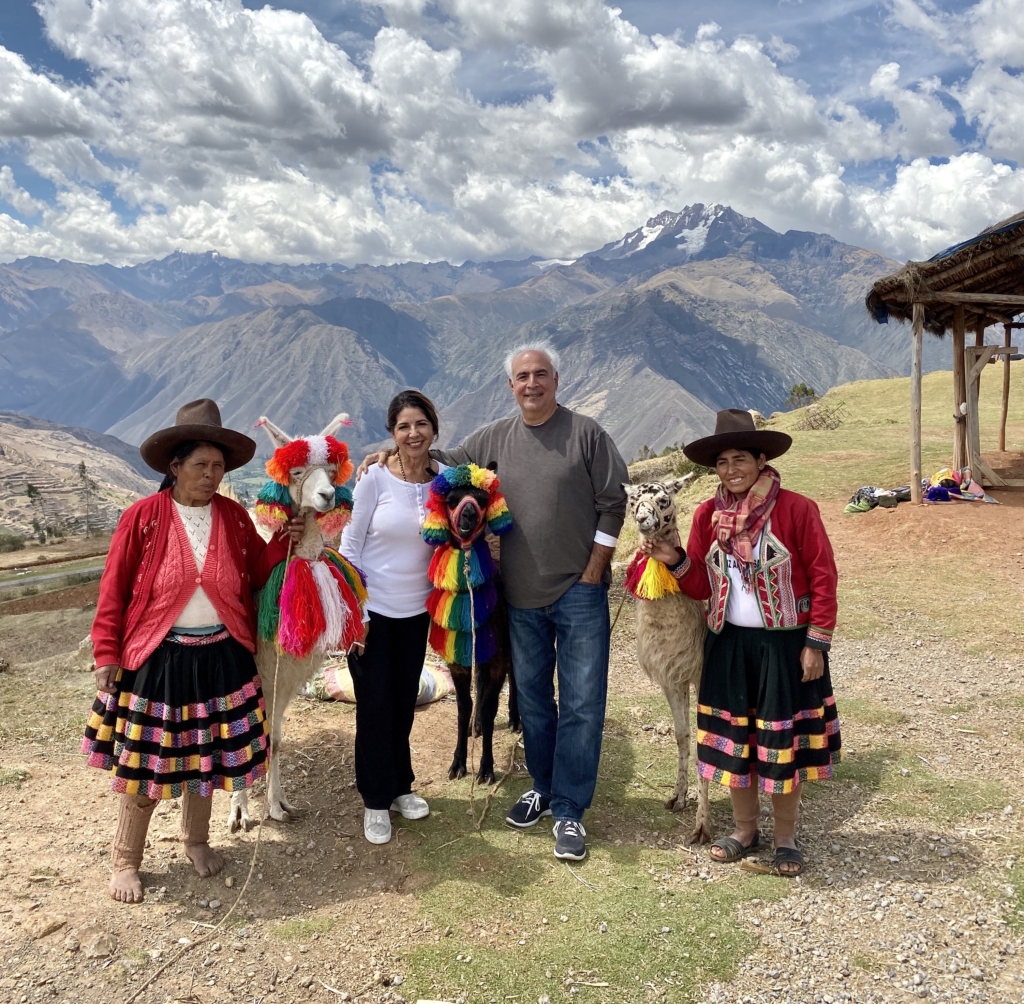
¡Hola Mi gente! I arrived in the Sacred Valley area of Lima. In the last couple of days, we had the opportunity to visit with artisans that taught us how they make color for the textiles used in weaving purses, belts, backpacks, table runners, among other handcrafted items, and how a craftsman works silver and stones. Beautiful!
For all the shoppers in the group, it was fun to learn the difference between real silver and fake silver, real stones, and plastic material. Touring Pisaq and Oliantaytambo and learning how the Incas lived, what they built, and about its rich agriculture was just fascinating! Meeting the Alpacas (amazing animals!) and ladies in typical Quechua outfits with babies on tow or in their back was a delight! One little girl told us “I speak Castellano (Spanish), English and Quechua!” Music to my heart, right? Enjoy the photos. More coming soon. Happy Friday!

Los últimos días han estado muy ocupados aprendiendo todo sobre la civilización Inca de Perú, haciendo amistades con las Alpacas y las lindas mujeres artesanas que nos enseñaron cómo se produce el color de las telas que usan para tejer, y los artesanos que trabajan con la plata y las piedras.
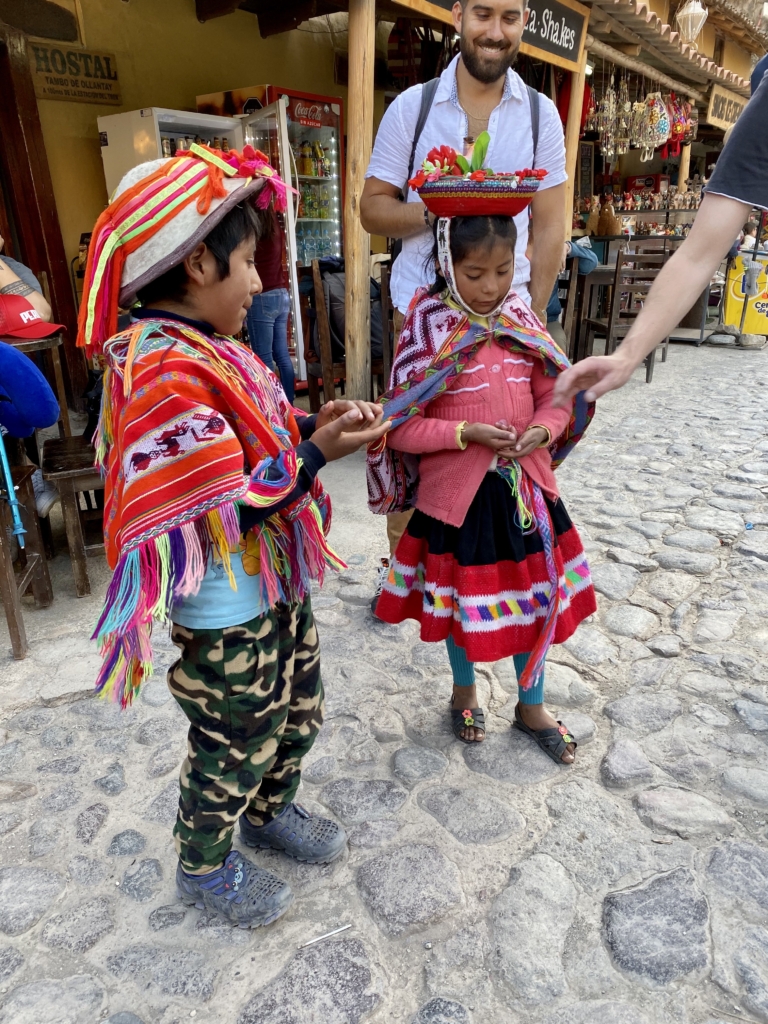
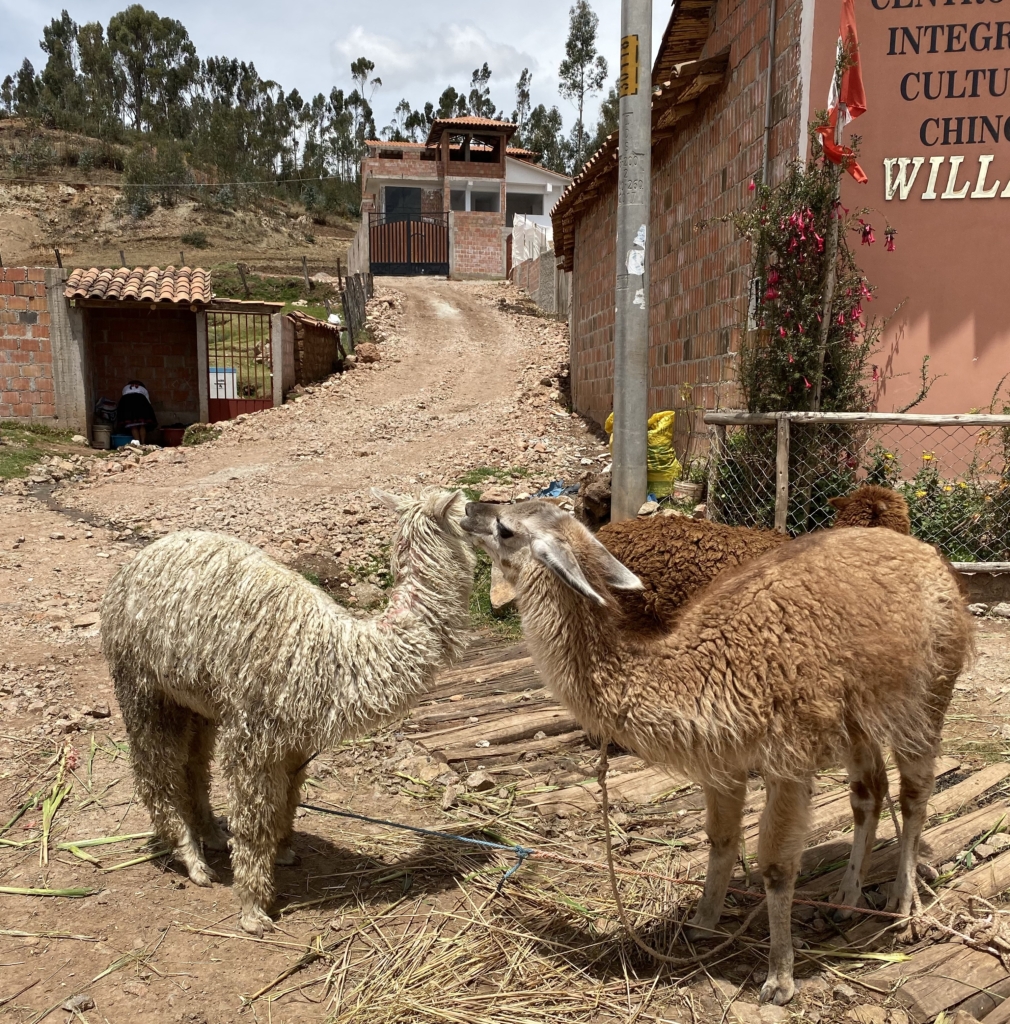
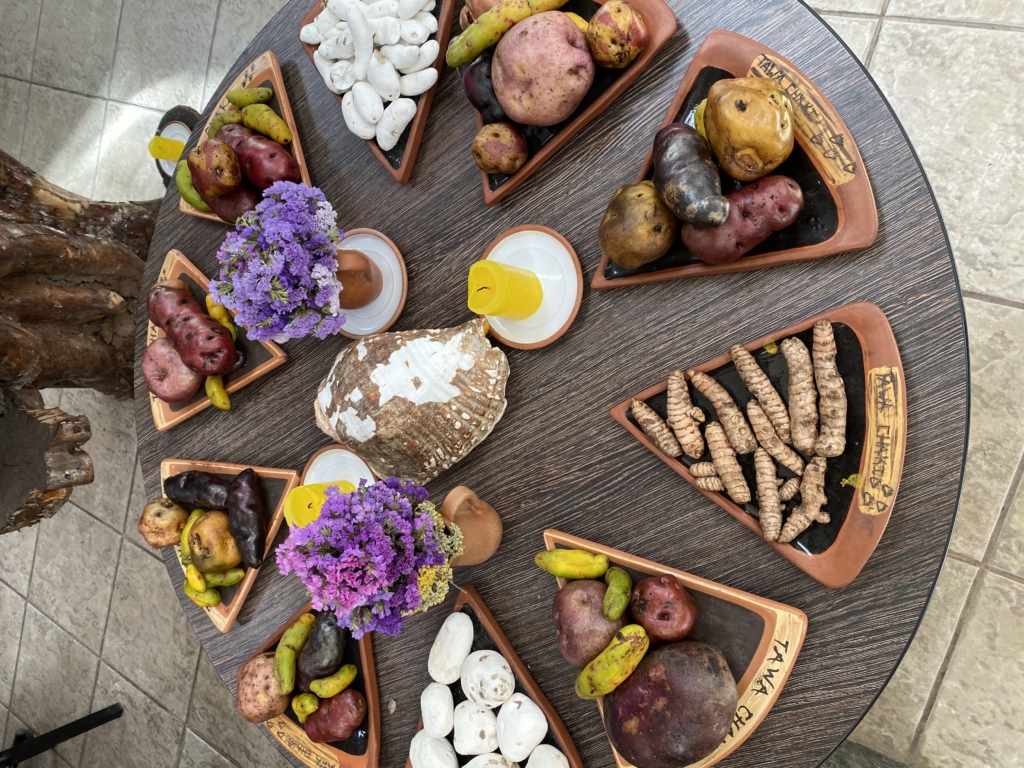
Visitamos Pisaq, una de las áreas arqueológicas más grandes de Perú y de las más ricas en agricultura, fue el lugar dónde se estableció la civilización Inca. Realmente, un grupo de gente rica en conocimientos artísticos, científicos y tecnológicos de su tiempo, un gran imperio cuya economía se basaba en la agricultura ( maíz, frijoles, algodón, tabaco, coca, entre otros) y la ganadería (llamas, alpacas) y la exportación de todo tipo de mercancía. ¡Imposible no sonreír al escuchar a los niños que conocimos hablar Quechua, español e inglés!
